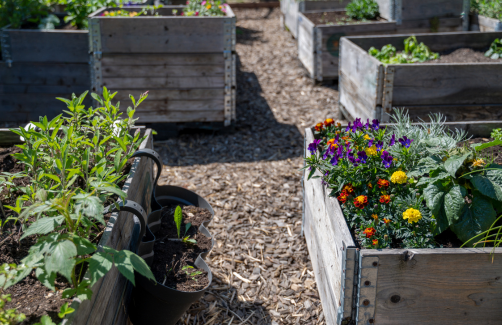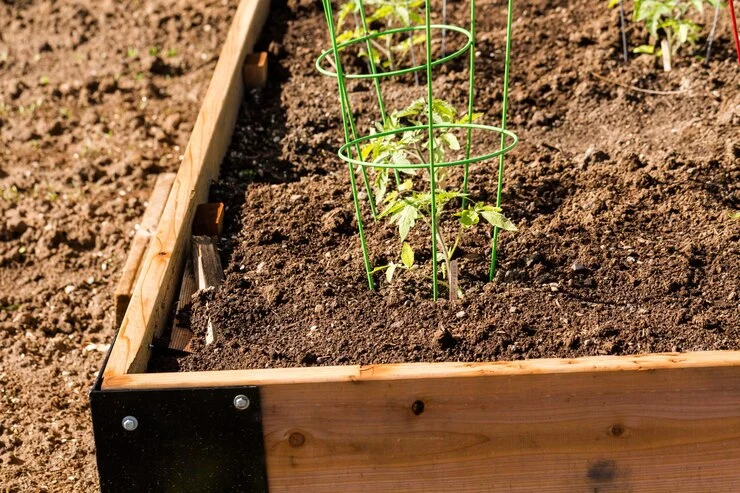Gardening enthusiasts always seek ways to improve their garden beds. They focus on aesthetics, durability, and functionality. One of the most effective solutions gaining popularity is the use of metal raised bed corners. These tools strengthen raised garden beds. They also enhance the gardening experience.
This guide explores metal raised bed corners. It covers their benefits, types, and installation methods. By the end, you’ll know why they are essential for serious gardeners.
What Are Metal Raised Bed Corners?
Metal raised bed corners are sturdy brackets. They are made of durable metals like steel, aluminum, or galvanized iron. These corners secure the edges of garden beds. They provide stability and increase longevity. They are popular with gardeners who value precision. These corners also offer durability in garden designs.
Benefits of Using Metal Raised Bed Corners
Choosing metal raised bed corners for your gardening setup offers many advantages:
a. Enhanced Durability: Metal corners offer exceptional strength. They prevent wooden edges from warping, splitting, or deteriorating over time.
b. Improved Stability: These corners keep the garden bed in place. They handle heavy loads of soil and plants easily.
c. Weather Resistance: High-quality metal corners resist rust and corrosion. They withstand harsh weather conditions. This makes them a long-lasting outdoor gardening solution.
d. Easy Assembly: Most metal raised bed corners are easy to install. They typically require only a few screws or bolts.
e. Aesthetic Appeal: Metal corners have sleek, modern designs. They add a polished look to your garden beds and enhance visual appeal.
Types of Metal Raised Bed Corners
There are different types of metal raised bed corners. They meet various needs and preferences.
a. Galvanized Steel Corners: These corners are strong and rust-resistant. They are perfect for long-term use.
b. Powder-Coated Metal Corners: These corners provide extra protection against corrosion. They come in various colors to match your garden’s look.
c. Stainless Steel Corners: These are ideal for gardeners wanting a premium, rust-proof option. They can withstand extreme weather conditions.
d. Customizable Metal Corners: Some manufacturers offer adjustable or modular corners. These can be customized to fit specific bed dimensions.
How to Choose the Right Metal Raised Bed Corners?
To choose the best metal corners for your garden beds, consider the following factors:
a. Material Quality: Choose corrosion-resistant metals like galvanized steel or stainless steel. This ensures longevity.
b. Bed Dimensions: Measure the height and width of your garden bed. Choose corners that fit perfectly.
c. Aesthetic Preferences: Consider the design and finish of the corners. Make sure they match your garden’s style.
d. Budget: Metal corners are an investment. Focus on quality over cost to avoid frequent replacements.
Tools and Materials Needed for Installation
Before installing metal raised bed corners, gather the following tools and materials:
- Metal raised bed corners
- Wooden or composite boards for the bed
- Screws or bolts (as specified by the manufacturer)
- Drill or screwdriver
- Measuring tape
- Level
Step-by-Step Guide to Installing Metal Raised Bed Corners
Installing metal raised bed corners may seem simple. However, attention to detail can greatly impact the final result. Follow these comprehensive steps to ensure a sturdy and visually appealing garden bed:
Step 1: Plan and Measure
Begin by deciding on the size and layout of your raised garden bed. Use a measuring tape to measure the dimensions of the boards accurately. This applies to both wooden and composite boards. This ensures the corners fit perfectly, preventing misalignment during installation.
Step 2: Cut the Boards to Size
Using a saw, cut the boards to the required lengths. Make sure the edges are straight and smooth to ensure a snug fit with the metal corners.
Step 3: Arrange the Boards and Corners
Lay the boards on a flat surface in the shape of your garden bed. Position the metal corners at each joint where the boards meet. This will help you visualize the structure. It ensures everything aligns properly before fastening.
Step 4: Drill Pilot Holes
Use a drill to stop the wood from splitting. Create pilot holes where the screws or bolts will go. Align the holes with the pre-drilled slots in the metal corners.
Step 5: Attach the Corners to the Boards
Secure the metal corners to the boards. Use screws or bolts as directed by the manufacturer. Use a drill or screwdriver to tighten them, ensuring a firm connection. Work one corner at a time and double-check the alignment as you proceed.
Step 6: Reinforce the Structure
Once all corners are attached, inspect the structure for stability. Add extra screws or brackets if needed. This will reinforce weak spots and improve sturdiness.
Step 7: Level the Bed
Place the assembled frame on the ground where you plan to install the garden bed. Use a level to check for evenness. Adjust the placement by adding or removing soil beneath the frame until it sits level.
Step 8: Fill the Bed with Soil
With the frame securely in place, fill it with high-quality soil suitable for your plants. Spread the soil evenly, ensuring it reaches all corners of the bed.
Step 9: Start Planting
Your metal-raised bed is now ready for planting! Arrange your plants based on their spacing needs. Water them thoroughly to settle the soil.

What Do You Put on the Bottom of a Metal Raised Garden Bed?
When setting up a metal raised garden bed, it’s essential to prepare the bottom layer thoughtfully. Common options include:
- Cardboard or Newspaper: It acts as a biodegradable weed barrier. As it decomposes, it enriches the soil.
- Landscape Fabric: Prevents weeds from growing while allowing water to drain.
- Gravel or Small Stones: Improves drainage in areas with heavy rainfall.
- Wood Chips or Straw: Adds a natural barrier and enhances water retention.
Choose the right material based on your garden’s needs. Consider factors like drainage and weed control.
How Long Do Metal Raised Beds Last?
The lifespan of metal raised beds depends on the material and maintenance. High-quality options like galvanized steel last 10-20 years or more. Powder-coated metals are also durable with proper care. Clean them regularly and prevent rust. Ensure the soil’s acidity doesn’t damage the metal. This will extend their longevity.
Are Metal Raised Beds Better Than Wood?
Metal and wooden raised beds both have benefits. However, metal beds are more durable and need less maintenance. Here’s a quick comparison:
Metal Beds:
- Long-lasting and resistant to rot or pests.
- Require minimal upkeep.
- Modern and sleek appearance.
Wooden Beds:
- Offer a rustic, natural look.
- Affordable and easy to work with.
- May require frequent replacement due to rot or pest damage.
Ultimately, the choice depends on your aesthetic preferences, budget, and willingness to perform maintenance.
Maintenance Tips for Metal Raised Bed Corners
To ensure your metal corners remain in top condition:
a. Regular Cleaning: Wipe down the corners to remove dirt and debris.
b. Inspect for Rust: Check for rust or corrosion. Address any issues quickly with rust-proof paint or sealant.
c. Tighten Screws: Periodically check and tighten any loose screws or bolts.
Where to Buy Metal Raised Bed Corners?
You can find metal raised bed corners at local hardware stores. They are also available at gardening centers and online retailers. Some popular options include:
- Home improvement stores like Home Depot or Lowe’s
- Specialized gardening websites
- Online marketplaces such as Amazon or Etsy
DIY vs. PreMade Options
Premade metal corners are convenient. However, some gardeners prefer making their own using scrap metal or custom designs. Consider the following:
a. DIY Corners: Offer flexibility and cost savings but require more time and tools.
b. Pre-Made Corners: Provide convenience, consistent quality, and easy installation.
Creative Ideas for Using Metal Raised Bed Corners
Metal raised bed corners are versatile and can be used creatively in your garden:
a. Multi-Level Beds: Create tiered garden beds for a dynamic visual effect.
b. Unique Shapes: Experiment with non-traditional shapes like hexagons or triangles.
c. Vertical Gardening: Use metal corners to build tall beds for vertical planting.
Conclusion
Metal raised bed corners are a game-changer. They offer durability, stability, and style for gardeners. Whether you’re a beginner or an experienced gardener, these corners are a great investment. They will transform your gardening experience. Choose the right type of corners. Ensure proper installation and maintain them regularly. This will give you a beautiful and functional garden bed for years. Start your gardening journey with metal raised bed corners today. Watch your garden thrive like never before!
